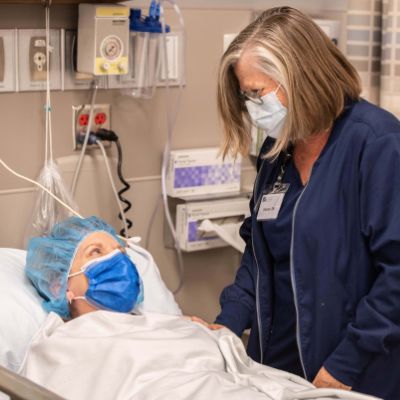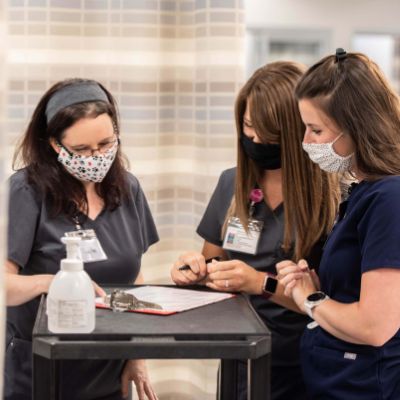Cataracts are a natural part of aging, and almost everyone will experience them eventually. However, there are certain risk factors that can increase your chances of developing them. While not all of these factors may be avoidable, knowing about them can help your eye doctor assess your risk, keep tabs on any developing cataracts, and create a treatment plan if they begin to form.
Your family history can be an important indicator of your cataract risk. Diabetes can damage the blood vessels in your eyes which increases the risk of cataracts. Along with a host of other health problems, smoking can cause you to develop cataracts sooner in life. Eye injuries and extended UV exposure also contribute to cataracts.
1. Family History
While you can’t change your DNA, your family’s medical history can go a long way in helping your eye doctor treat you to the best of their ability. This is because your family medical history also lets your medical team know what to expect for you personally. For example, although everyone is at risk for cataracts as they age, a family history of them can indicate an issue that needs to be watched more closely.
Having a close relative with cataracts puts you at a much higher risk of the condition than someone who doesn’t. That’s why it’s so important to discuss your family medical history with your close relatives and with your eye doctor. Not only will this let you know your risk for cataracts, but it will alert you and your doctor to other health issues that may run in your family.

Click here to learn everything you need to know about cataract surgery in Knoxville, Tennessee!
2. Diabetes
Diabetes can damage the blood vessels in your eyes due to abnormal insulin levels. This can be the result of not being able to use insulin properly or the body simply not producing enough. The lack of insulin results in high blood sugar which, over a long period of time, can damage blood vessels. This includes blood vessels in your eyes which increases your risk of developing cataracts.
A combination of diabetes and cataracts can cause swelling of the aqueous humor, which is the liquid between the cornea lens and the eyeball. High amounts of glucose within the aqueous humor can cause the lens to swell, resulting in blurred vision. This can make the blurring of your vision due to cataracts even worse if you don’t manage your diabetes properly.
To learn more about the causes of cataracts, click here!
3. Smoking
Smoking is as bad for your eyes as it is for your lungs. Along with cataracts, smoking tobacco products also increases your risk of age-related macular degeneration (AMD). As the Center for Disease Control (CDC) points out, you are two or three times more likely to develop cataracts if you smoke compared to those who choose not to.
Unlike aging and your family’s medical history, smoking is a risk factor for cataracts you can do something about today. While it’s best to never take up in the first place, the next best thing is to quit immediately. This will help to reduce your risk of cataracts as well as a number of other smoking-related health problems such as cancer, heart disease, and stroke.

4. Eye Injuries
Having an eye injury is bad enough, but the fact that it may lead to cataracts later on can make them even worse. That’s why it’s so important to see your ophthalmologist whenever you have an eye injury.
They will be able to treat the wound as well as determine if it may cause cataracts later on. At subsequent eye exams, your eye doctor will be sure to check for signs of a developing cataract in your eye.
Eye injuries come in two types: blunt and penetrating. Both can cause traumatic cataracts in the future but in different ways. What’s important is to notify your eye doctor immediately and schedule an eye exam. They will be ready to evaluate your risk and provide you with the treatment you need for cataracts.
5. Extended UV Exposure
You already knew that extended UV (ultraviolet) exposure can be bad for your skin, but it can be bad for your eyes as well. The sun isn’t the only danger either since UV radiation can also be created with artificial light. With this in mind, it’s important to take special precautions as you protect your eye from both natural and artificial threats.
Prolonged exposure to UV light can speed up the growth of cataracts. The best way to prevent this is with high-quality sunglasses that block UV rays. For the best protection, choose a pair that has 99 – 100% UV protection. You can also select sunglasses labeled as “400 nm,” which means the same thing as 100% UV protection.
Are you in need of cataract surgery in Knoxville, TN, due to the above risk factors? Contact us today with any questions you may have!
Your family’s medical history can let you know if you’re at a heightened risk for cataracts. Diabetes is another important factor since it can damage the blood vessels in your eyes. Smoking is another big risk factor for cataracts along with many other health issues. Both eye injuries and extended exposure to UV radiation can also raise your risk of developing cataracts.
Tennessee Valley Eye Center is Knoxville’s premier eye care facility, performing more eye surgeries than any other facility in the region. Our board-certified surgeons cover all ophthalmic subspecialties, including cataracts, cornea, glaucoma, retina, eyelid disorders and cancers, and eye muscle surgeries. We want you to feel as comfortable and confident as possible as you prepare for surgery. If you would like to discuss your surgery with us at any time, please do not hesitate to contact us.


